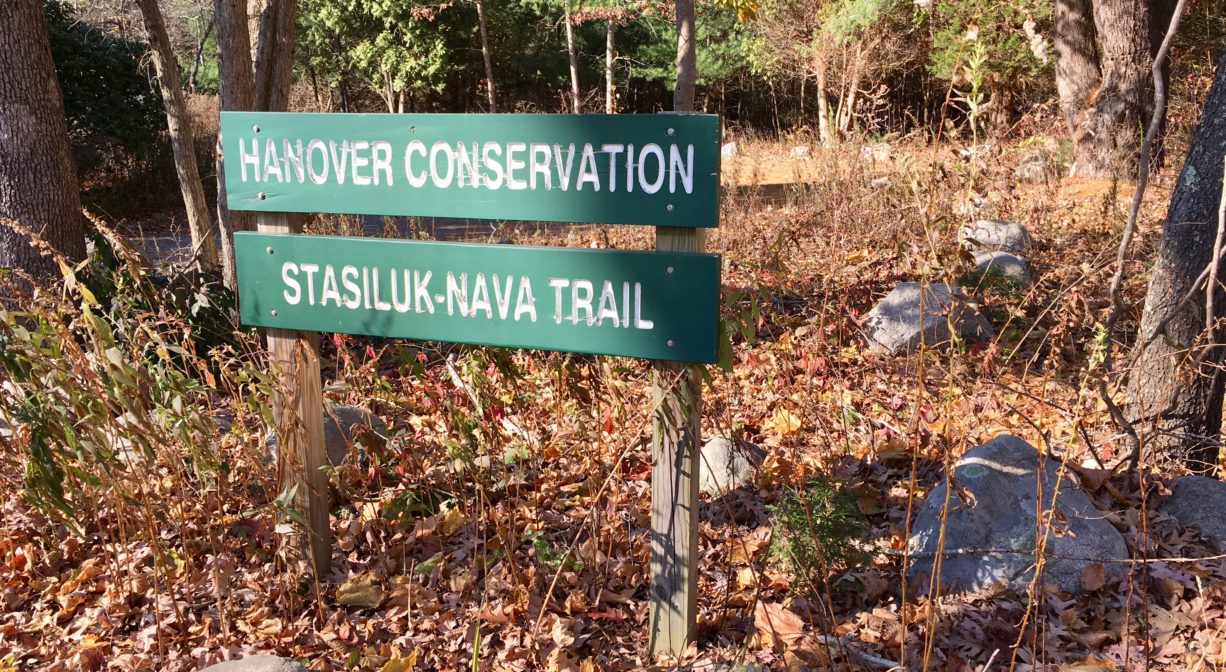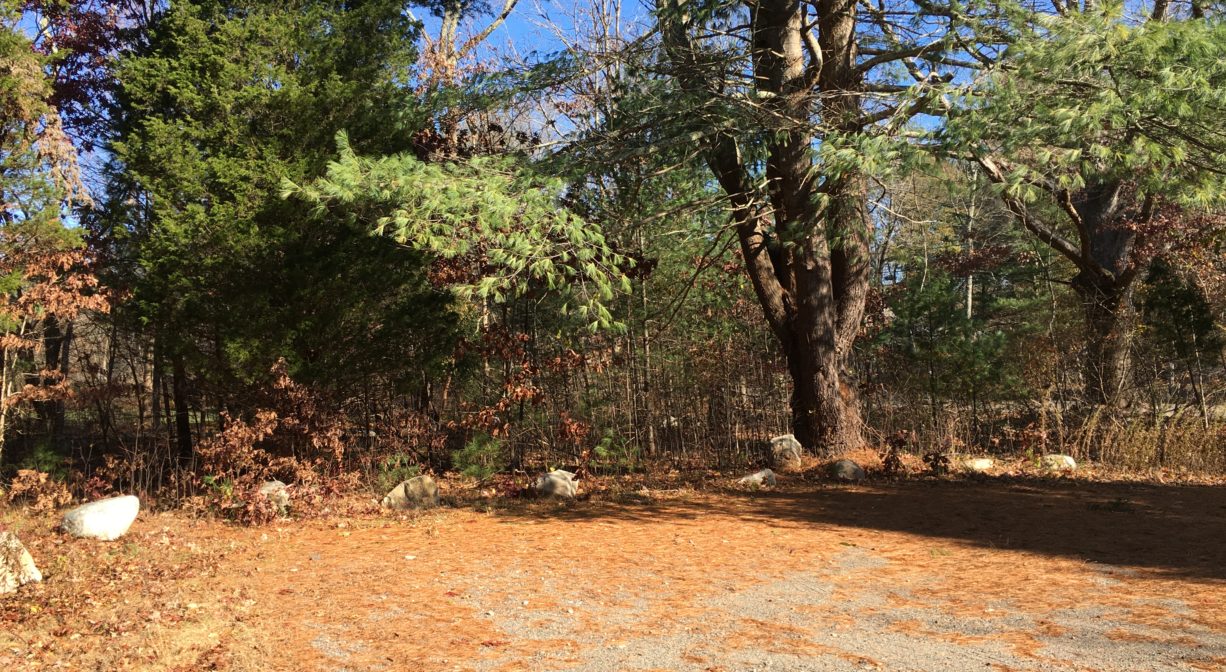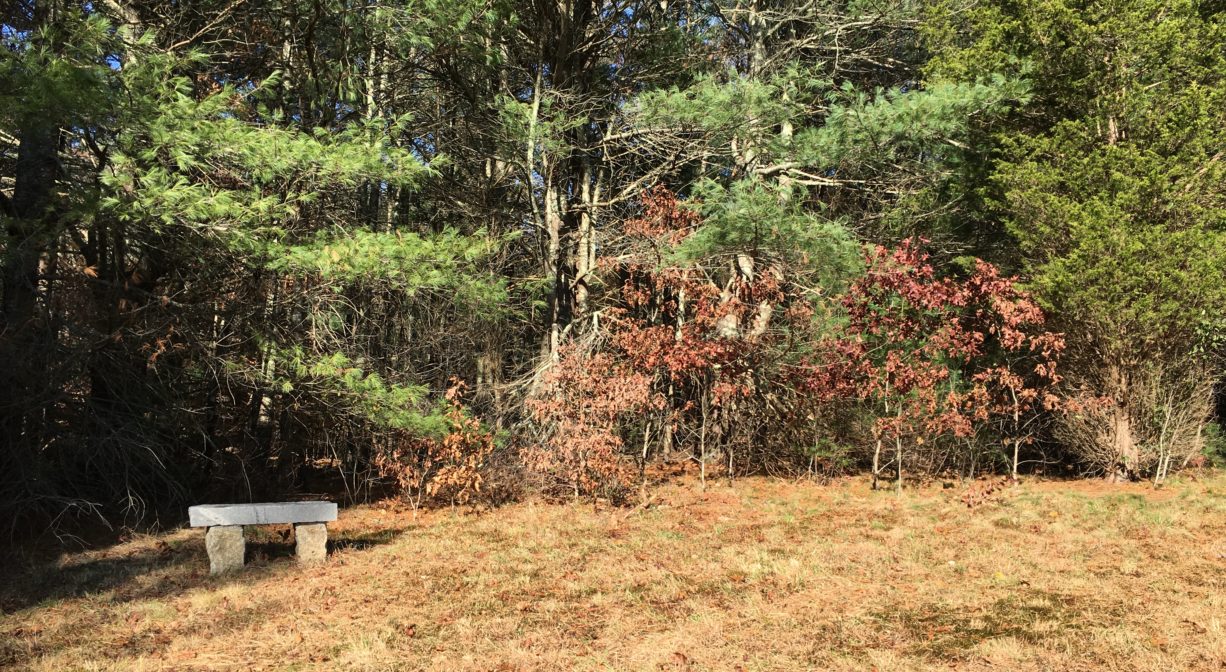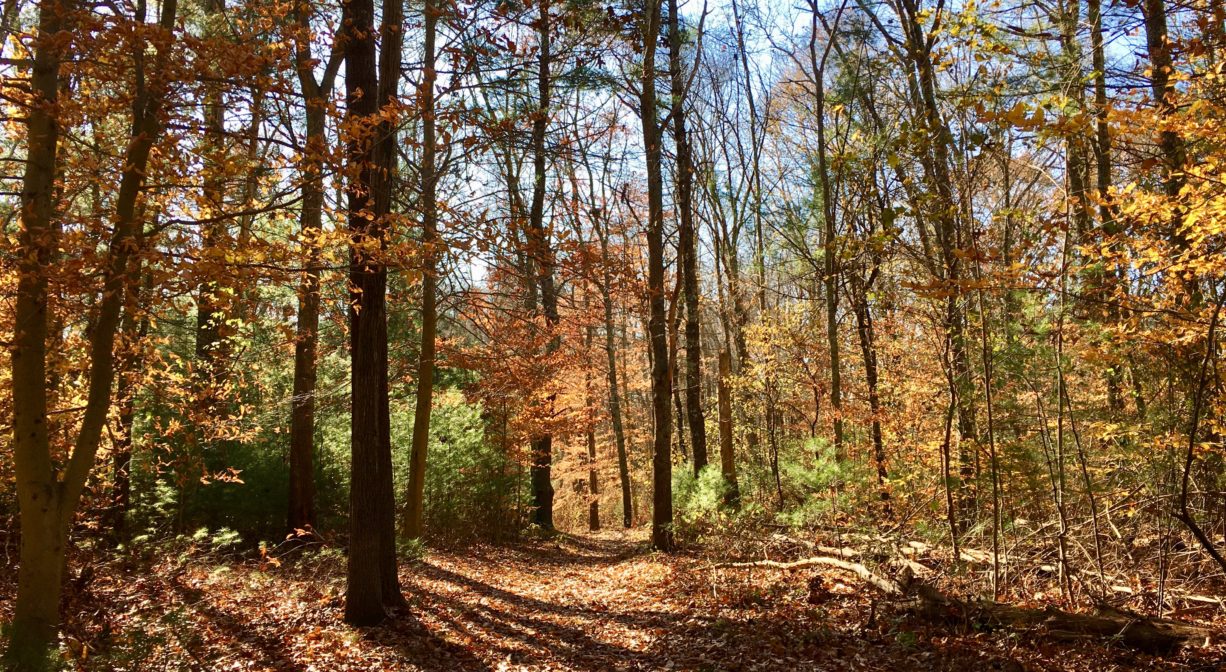553 Center St, Hanover, MA 02339, USA
Owned By: Town of Hanover
The Nava-Stasiluk Conservation Area in Hanover offers just under a mile of trails through the woods, across Torrey Brook, and along an old railroad bed. It is part of an approx. 3-mile trail network linking the Hanover Senior Center, Tindale Bog, and the Myrtle Street Athletic Fields / Arthur Ceurvels Park.
Hunting is not permitted on this property.
Features
This trail network includes a 0.4-mile section of the former Hanover Branch Railroad. The Hanover Branch Railroad extended 7.8 miles from Hanover Four Corners, through South and West Hanover, across Rockland, to North Abington, where it connected with the Old Colony Railroad to Plymouth. Incorporated in 1846, and constructed over the better part of the next 20 years, it officially opened for service in 1868.
E. Y. Perry — a businessman, Justice of the Peace, and abolitionist — operated a large tack factory in South Hanover, and was largely responsible for the creation of the railway. He also owned a general store (now Myette’s) and constructed the building in South Hanover that for many years housed a series of a shoe factories – Goodrich, Cochran, and Shanley — and part of the Clapp Rubber Company. The railway facilitated the transport of materials and finished products to and from these and other businesses, and also offered passenger service. The Old Colony Railroad absorbed the Hanover Branch in 1887. In 1893, the New York, New Haven and Hartford Railroad took over the lease. Railroad service had dwindled significantly by the 1930s.
For thousands of years, the land that encompasses what is now Hanover was inhabited by indigenous people. Circa 1617, there was a major outbreak of disease from European settlers that decimated an estimated 90% of the native population in New England, including the Massachusett and Wampanoag tribes that inhabited this area. There are still descendants of these original inhabitants living on the South Shore today, and they are known as the Mattakeesett Tribe of the Massachusett Indian Nation, the Massachusett Tribe at Ponkapoag, the Herring Pond Wampanoag, and the Mashpee Wampanoag Tribe.
This property was purchased with Community Preservation funds in 2008.
Trail Description
If you begin at the parking area, you can follow a red-blazed Hanover Conservation trail into the woods, to access the trails at the Hanover Senior Center as well as Torrey Brook. If you follow the green-blazed Hanover Conservation trail, you will soon arrive at a long straight stretch of trail — what was once a railroad bed. To the north (left), you can continue to Myrtle Street Fields / Ceurvels Park, and the green-blazed Myrtle Street Trail, which continues both to Samoset Drive, and to the Hanover Senior Center Trails network. To the south (right), the railroad bed continues through the woods to the Tindale Bog trail network.
Habitats and Wildlife
The woods here are primarily pine, with oak, beech, birch and maple and lots of fern. Torrey Brook, a tributary to the Drinkwater River, flows through the property. The Drinkwater River flows into the Indian Head River, a major tributary to the North River, which forms the boundary between Hanover and Hanson. The Indian Head River merges with Pembroke’s Herring Brook, a short distance downstream of Ludden’s Ford Park, to form the North River at a spot called The Crotch. The North River flows 12 miles through Pembroke, Hanover, Norwell, Marshfield and Scituate, eventually making its way to Massachusetts Bay and the Atlantic Ocean.
Historic Site: No
Park: No
Beach: No
Boat Launch: No
Lifeguards: No
Size: 101 acres (when combined with Hanover Senior Center and Tindale Bog)
Hours: Dawn to Dusk
Parking: Limited on-site parking near 526 Center Street. Look for the Nava-Stasiluk Conservation Area sign.
Cost: Free
Trail Difficulty: Easy
Facilities:
Bridges and boardwalks in the wetland areas.
Dogs: Dogs must remain on leash. Please clean up after your pet!
Boat Ramp: No
ADA Access: No
Scenic Views: Yes
Waterbody/Watershed: Torrey Brook (Drinkwater River/North River watershed)











